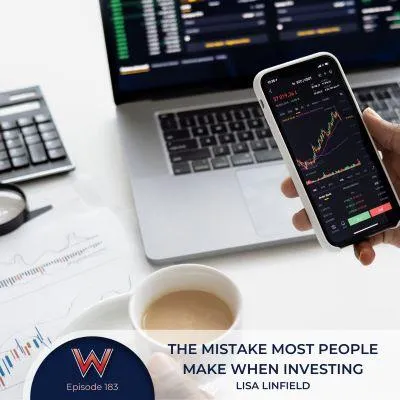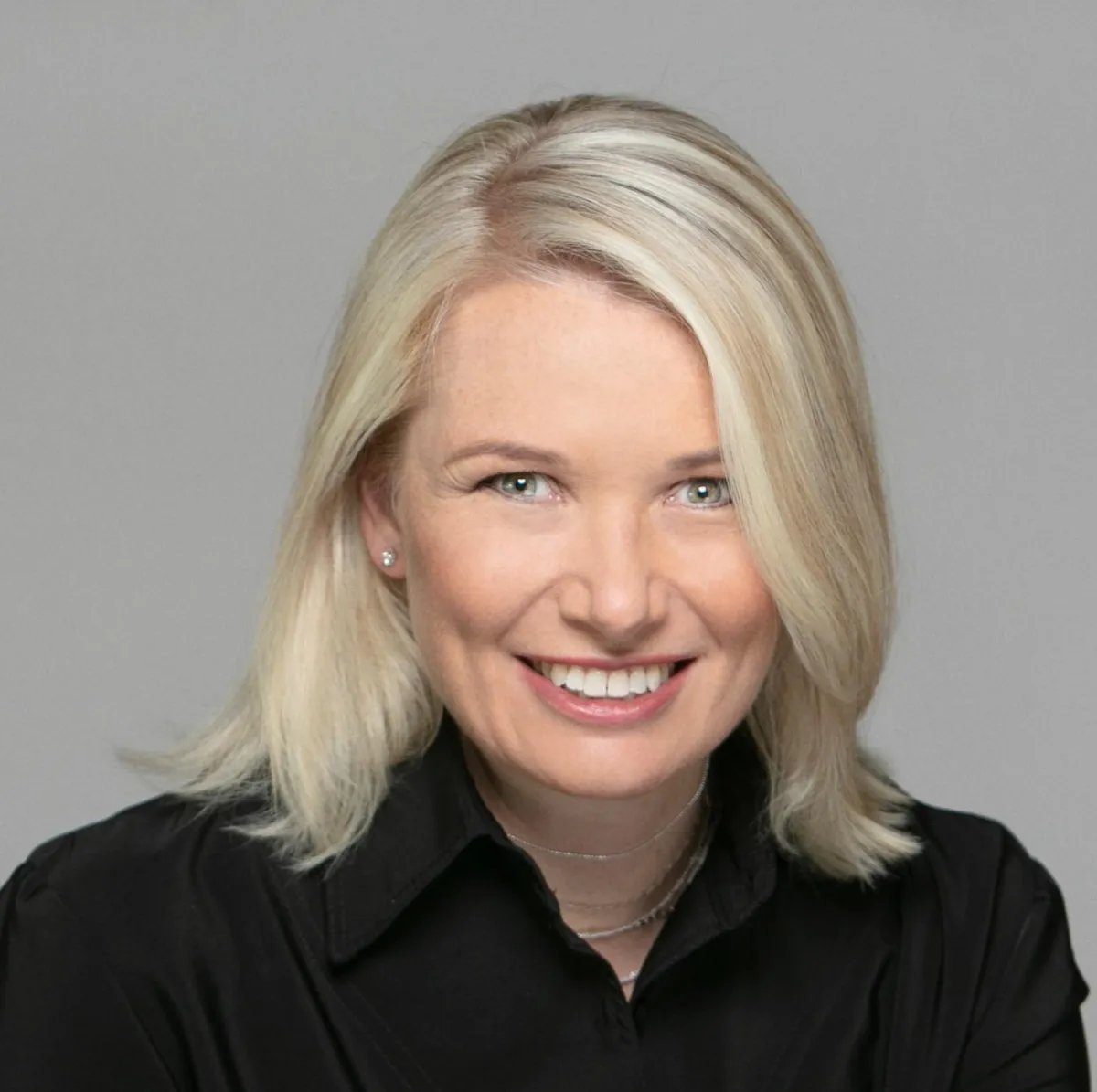Browse for the latest episode of...
working women's wealth

183 The mistake most people make when investing
If you’ve been listening to the last few episodes, you now know a thing or two about investing. The next piece of the puzzle involves avoiding the biggest mistakes people make when investing.
Today I’m going to tell you the three BIGGEST mistakes I’ve seen most people make when investing, whether they have a little invested, or a lot!
Show notes:
[01.35] Number 3: Monitoring your investments
[04.36] Number 2: Assuming that the company has taken enough
[06.54] Number 1: The impact of tax
Quotes
“It is your life and your money, and you really do have to take accountability for it.” - Lisa Linfield
“Remember the objective of investing, and that is that you need growth.” - Lisa Linfield
“It is almost guaranteed that there is no way you will have enough, if the only money you’ve ever invested is the money from your employment retirement fund.” - Lisa Linfield
Related posts and episodes
How much is enough?
Investing Tax free!
Optimising tax on your investments
The decision tree you need to choose your investment
The four foundations of investing
Four things you need to know about your home(financially)
Why you should invest offshore
Why your home is NOT an investment
Subscribe to our podcast on iTunes or Spotify
Please do Subscribe to our Podcast on iTunes or Spotify and leave a review. This helps the podcast to rank higher and therefore makes it more visible to others browsing podcasts in the hope they too may benefit from our content.
Get my book - Deep Grooves: Overcoming Patterns that Keep you Stuck
You can get the first two chapters of my book FREE here
If you want a paperback copy and you’re in South Africa, visit my site LisaLinfield.com
If you want a Kindle copy or a paperback anywhere in the world, visit Amazon
TRANSCRIPT
Hello everyone and welcome to today’s episode of Working Women’s Wealth. I’m Lisa Linfield and I’m building a community of Women who are committed to the journey of living Financially Free lives – so that we can have the money that enables us to CHOOSE – IF we want to work, where we work, and when, so that we can follow our dreams.
Over the last few episodes we’ve been looking at investing, and it all culminated in last week’s episode when I went through the step-by-step guide to the decisions you need to make to invest. I also created a one-page PDF download for you to use as you listened to the episode, and as you make your investment decision.
I really recommend you go to the shownotes of this episode and download that decision tree, and it will help you invest.
So today I’m going to tell you the biggest mistake people make when investing – and I see it in people with huge amounts invested, and I see it in people who don’t have a lot invested.
There are three mistakes actually, so I’ll go through them from bottom to top.
Number 3: Monitoring your investments
Just this last month I saw a woman who showed me her statement of an investment that’s been going for 28 years. She had made just 1%.
Now in my mind, that’s shocking and borders on negligence from the company’s perspective… but I see that a lot with life insurance companies especially in the older products. The biggest reason for this is the enormous fees they got away with charging in the old days.
But it’s also a reflection on the lady whose investment it was. She never looked at her statements and made the assumption it was all going to be okay.
No, I’m not saying that you shouldn’t trust your adviser. But what I am saying is that it’s your life, your money and you need to take accountability for it.
The most important number you need to track is the 5 year number. How is your performance doing over a rolling 3 and 5 year period. Do Not worry about a 3 month, 1 month or even 1 year performance number. Track it over a 3 year and 5 year period.
The question I get asked is ‘What should it be’? Now all funds have what’s known as a benchmark – which is what they measure themselves against. So this is the easiest way to see how your fund is performing. But I’ve seen companies changing the benchmark to make their performance look better.
But remember what growth you need, as I mentioned in episode 180. You need your money to at least grow at inflation – so you can buy the same things in 10 years time as you buy now. And then, depending on the risk you personally are prepared to take, it will be inflation +2%, 4% or 6%. So that’s what you need to track.
Number 2: Assuming that the company has taken enough
The second biggest mistake that I see people making is that they assume that given the companies they’ve worked for through their life have taken money towards their retirement, they will have enough.
I need you to really listen up here… there is NO WAY you will have enough if that’s all you have.
There are three reasons why
1. Almost all countries have a cap on the maximum you can contribute in any one year tax free into that fund. Whilst that may not impact you when you start your career, as your salary grows, that cap is reached and it means you’re not saving enough when you should be (as you’re earning the most).
2. In order to win the battle for talent, companies put less of your money into your retirement savings so that you feel like you have more in the bank. So you feel like you’re earning more with them – when in fact you’re saving less.
3. Most people need to be saving 20% of their pre-tax income. Even if your company takes that much, some of it goes into your life insurances – usually about 2%. So if they’re only taking 10% to your retirement and 2% is for life insurance, then you are actually contributing 8% and not 20%... so each year you have a hole.
Most people take their advice on their choices from the HR person. Now whilst they are experts in their field of HR, they aren’t actually qualified to give you advice on either how much to save or which fund to choose. So get proper advice… and when it comes to ‘how much’ – choose the option that puts the most amount of money into your retirement saving.
Number 1: The impact of tax
The biggest mistake I see people make who self-invest is they don’t understand the impact of tax on how much money you have when you need to use the money.
I have two clients who retired at a similar time with a similar amount of money. The one had 95% of her money between her company retirement fund and property that she rented out. The other had around 50% in the company retirement fund, about 5% in rental property, and the rest in mutual funds or unit trusts.
Although the number they have is the same, there’s a very big difference between the money they can spend. And that’s because you pay full income tax on rental income and money you draw from a retirement fund. So if you’re a maximum earner, that can be up to 45% of your money is going to tax. But, when you sell shares, you pay Capital Gains Tax, which is a lot lower. And the income from shares is as dividends, with dividend tax being lower.
As an adviser, because there are different types of investments with my second client, we’re able to draw less money from the high tax retirement funds, and more money from the normal investments – so she pays around 8% tax only despite drawing a similar income.
As I mentioned in the last episode, the government needs you to save for your retirement. If you do, they don’t need to pick up your medical bills, living expenses etc. The elderly are the most expensive medical and social services cost any country has.
So, to encourage that, they give you tax breaks… especially on your Retirement Savings.
But what you need to know about tax is that if the government doesn’t get it now, they will make you pay it later. Here’s how it works.
Let’s say you were going to put 100 into your investment. And your tax rate is 30%. You have 3 choices of investment
1. Put the full 100 into your retirement account
a. You’ll pay no tax now, but you will pay tax later on the full grown amount at your income tax rate
2. Pay the tax now of 30, and invest 70 in your tax free investment account. Pay no tax later on despite how much it’s grown to
3. Pay the tax now of 30, and invest 70 into a normal investment account in a unit trust or mutual fund, and pay capital gains tax on the growth only– which is usually way smaller than income tax.
Now… all of them have pro’s and con’s… and with maximum amounts in your retirement funds and your tax free investment account, you may end up needing all three if you invest fully for your retirement.
So What’s best?
Truly, this is no cop out, but the maths is VERY different depending on how much you’re investing, when you retire, and how much you are drawing from your investment each year in retirement and your income tax rate for that money.
But I can tell you this. For many people the first two things I’d invest in would be
1. Company retirement fund if your employer is matching your contribution (happens in the US mainly) and to the maximum of that matching
2. And for everywhere else, maximise your tax-free investing first
After that, you will need to do the numbers. But I can tell you that you want flexibility in retirement, so don’t put it all in retirement funds, or all in property or all in one type of investment. You unfortunately can’t reverse out of a retirement fund without paying tax penalties.
Get someone to help you with your investments friend – a qualified financial adviser – at least to help you set it up.
If you haven’t already, I’d highly recommend you download the decision tree for investing

Explore
On Social
YourBrand.com - All Rights Reserved - Terms & Conditions

